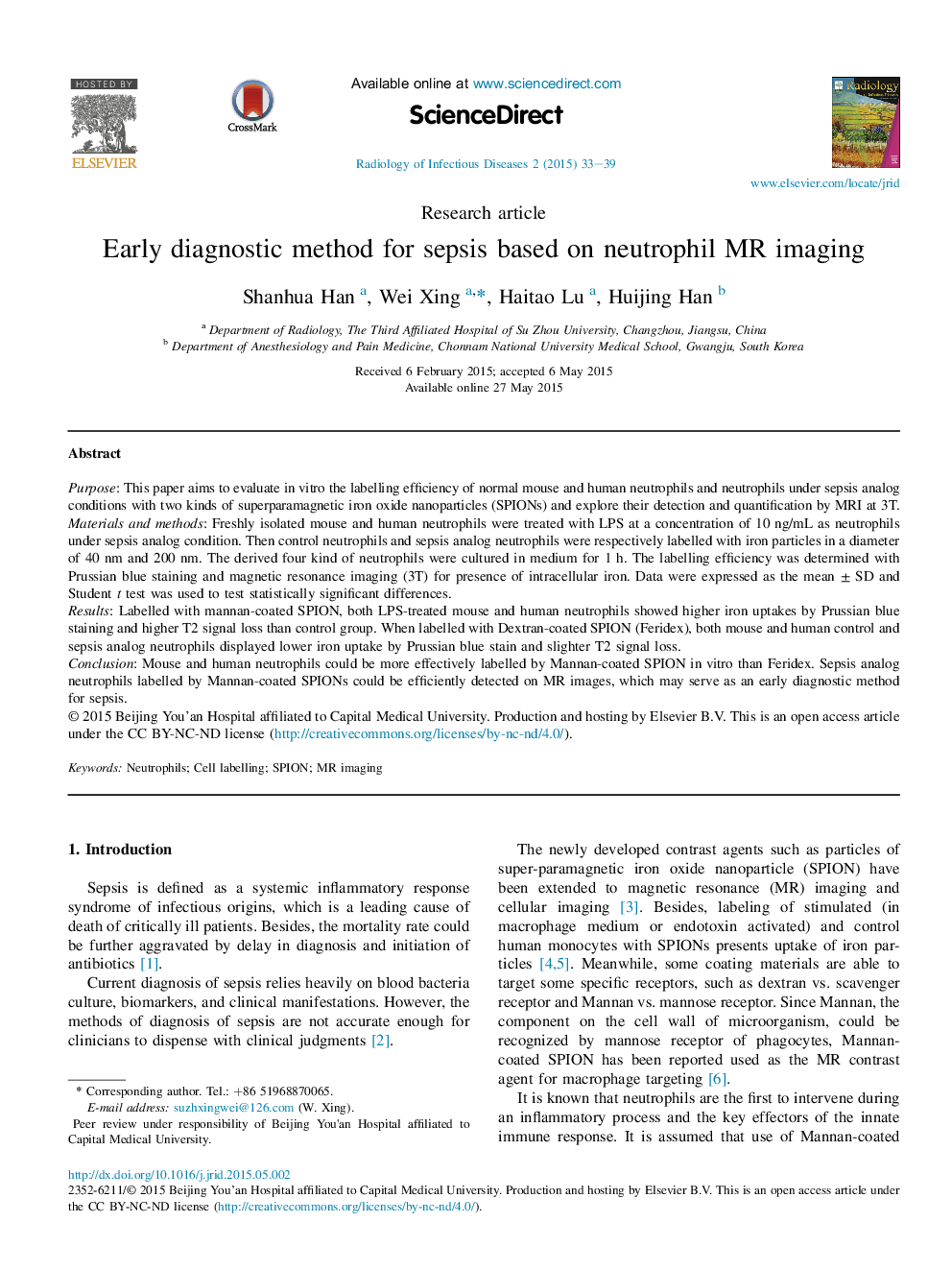| Article ID | Journal | Published Year | Pages | File Type |
|---|---|---|---|---|
| 878461 | Radiology of Infectious Diseases | 2015 | 7 Pages |
PurposeThis paper aims to evaluate in vitro the labelling efficiency of normal mouse and human neutrophils and neutrophils under sepsis analog conditions with two kinds of superparamagnetic iron oxide nanoparticles (SPIONs) and explore their detection and quantification by MRI at 3T.Materials and methodsFreshly isolated mouse and human neutrophils were treated with LPS at a concentration of 10 ng/mL as neutrophils under sepsis analog condition. Then control neutrophils and sepsis analog neutrophils were respectively labelled with iron particles in a diameter of 40 nm and 200 nm. The derived four kind of neutrophils were cultured in medium for 1 h. The labelling efficiency was determined with Prussian blue staining and magnetic resonance imaging (3T) for presence of intracellular iron. Data were expressed as the mean ± SD and Student t test was used to test statistically significant differences.ResultsLabelled with mannan-coated SPION, both LPS-treated mouse and human neutrophils showed higher iron uptakes by Prussian blue staining and higher T2 signal loss than control group. When labelled with Dextran-coated SPION (Feridex), both mouse and human control and sepsis analog neutrophils displayed lower iron uptake by Prussian blue stain and slighter T2 signal loss.ConclusionMouse and human neutrophils could be more effectively labelled by Mannan-coated SPION in vitro than Feridex. Sepsis analog neutrophils labelled by Mannan-coated SPIONs could be efficiently detected on MR images, which may serve as an early diagnostic method for sepsis.
